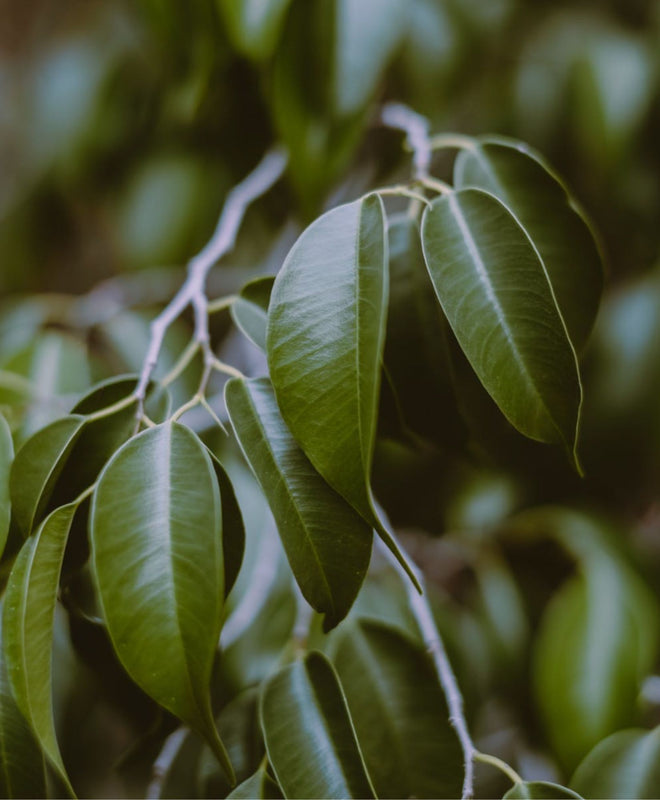
Care sheet: Ficus Benjamina
Pas le temps de tout lire ? 👇Cliquez ici pour un résumé👇
Sommaire

This variety of Ficus is the most common, graceful and yet almost indestructible. Its branches slant harmoniously as the Benjamina grows taller, earning it the nickname of the weeping fig tree.
We chose to call him Jérémy at Paris Pousse, a delicious first name that suits him like a glove.
If you adopt it while it is still manageable, that is to say with tender branches, you can give it the shape that suits you. Some opt for a discreet interlacing, which will prove to be very aesthetic and surprising at the same time.

IN ONE LOOK
☀️ Exposure: The Ficus needs bright light to grow, however direct sun is very likely to burn its leaves. In the room where you will place it, it is better to provide it with a temperature between 15 and 22°C and no more.
💧 Watering : Watering it moderately once a week is enough, preferably with non-calcareous water! In between waiting for the potting soil to dry, a layer of clay pebbles can allow it to retain its humidity level without having to flood it.
❌ Cultivation errors: Once in place, avoid moving your Ficus Benjamina, it appreciates a sedentary lifestyle and prefers to avoid sudden temperature changes. Apart from that it is rather easy to maintain, as long as you respect its living space.


🐛 DISEASES AND PESTS:
Leaf fall is not a sign of disease , especially when it is periodic and related to seasonal changes. On the other hand, mealybugs can stick its foliage and the red spider mite can turn it yellow in the event of a massive attack.
Consequences : Mealybugs deposit a whitish and woolly honeydew, which will eventually smother the leaves of your plant that they have invaded. Deprived of the sap that these insects love, your plant will wither or even die.
Solutions: You can remove them with a toothpick, as soon as they appear, or a firm brush dipped in soapy water. Brushing them with diluted insecticide is another form of treatment, which is then applied to the entire plant.
As for spider mites , they are sucking mites that nestle under the leaves to weave their web. Since they like to be dry and warm, you can drive these pests away by watering your plant regularly.

mealybugs

red spiders
🌱 PLANTING OR REPOTTING A FICUS:
A Ficus can in a few years invade too much the interior room where you will have installed it. Never mind, it is a plant that likes to be pruned, even is perked up by it. A slight pruning and here it is ready to disperse again.
STEP 1
It is generally in the spring that the repotting is done , a period conducive to a good recovery. Use a mixture based on classic potting soil, then adding liquid fertilizer every 15 days during its growth period.
STEP 2
Do not choose a pot that is too big, the ficus likes to be in a cocoon, even if it seems to have reached its maximum size. Be satisfied with a superficial renewal of the substrate on the surface, it is most of the time sufficient.
STEP 3
The multiplication being done during the pruning, keep small branches to make young Ficus (to offer as needed, it's always a pleasure). Soak them in water for a few days then plant them, recovery is assured.
REPOTING KIT
A tarp, a piece of plastic film, clay balls, a bag of potting soil and coconut mulch: + a sheet to help you with your repotting
👍🏼 TO KNOW:
FIND another ficus
Written by Michael DISDERO




